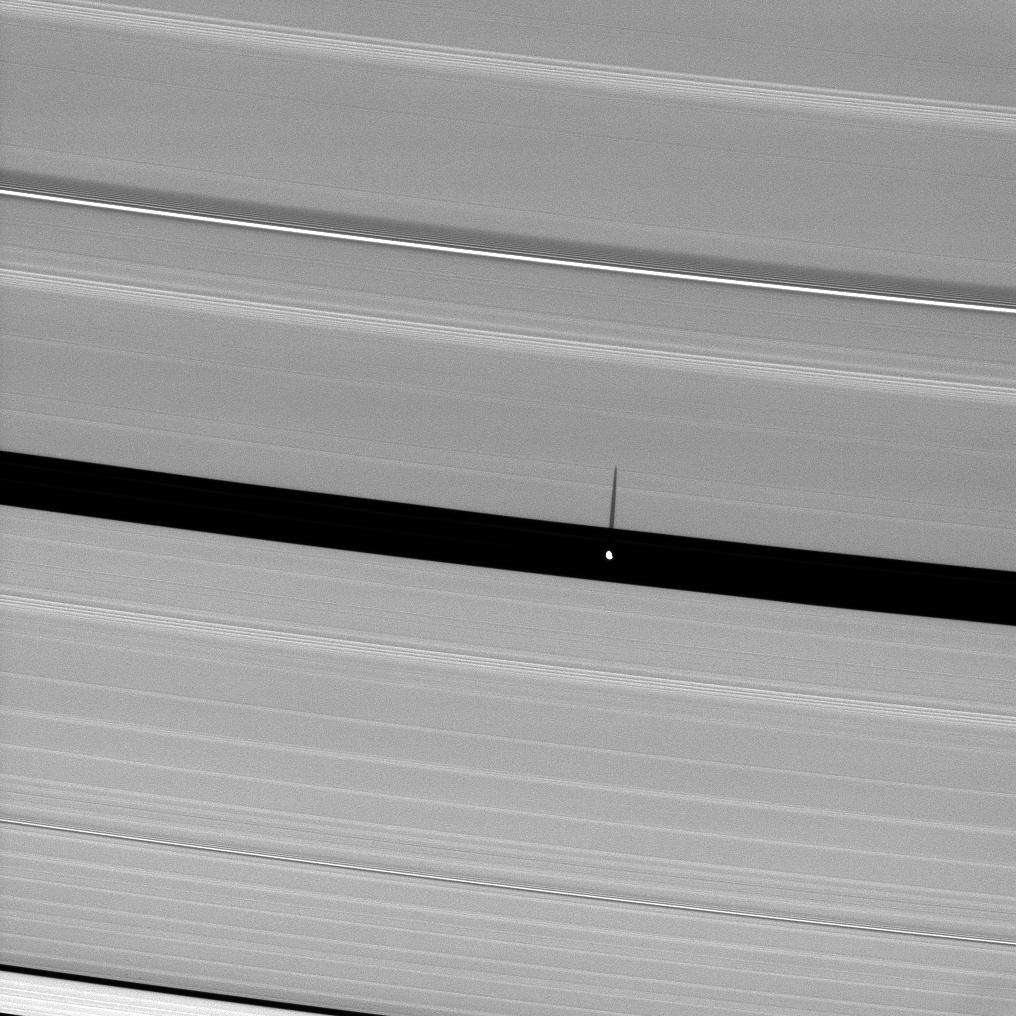Shadow of Saucer-Shaped Moon

| PIA Number | PIA11529 |
|---|---|
| Language |
|
Saturn's moon Pan, orbiting in the Encke Gap, casts a slender shadow onto the A ring.
For a closeup view of the "flying saucer" shape of Pan (28 kilometers, or 17 miles across), see Saturn's Saucer Moons.
The novel illumination geometry created as Saturn approaches its August 2009 equinox allows moons orbiting in or near the plane of Saturn's equatorial rings to cast shadows onto the rings. These scenes are possible only during the few months before and after Saturn's equinox which occurs only once in about 15 Earth years. To learn more about this special time and to see movies of moons' shadows moving across the rings, see Moon Shadow in Motion and Weaving a Shadow.
This view looks toward the sunlit side of the rings from about 57 degrees below the ringplane. The image was taken in visible light with the Cassini spacecraft narrow-angle camera on May 24, 2009. The view was acquired at a distance of approximately 840,000 kilometers (522,000 miles) from Pan and at a Sun-Pan-spacecraft, or phase, angle of 123 degrees. Image scale is 5 kilometers (3 miles) per pixel.
The Cassini-Huygens mission is a cooperative project of NASA, the European Space Agency and the Italian Space Agency. The Jet Propulsion Laboratory, a division of the California Institute of Technology in Pasadena, manages the mission for NASA's Science Mission Directorate, Washington, D.C. The Cassini orbiter and its two onboard cameras were designed, developed and assembled at JPL. The imaging operations center is based at the Space Science Institute in Boulder, Colo.
For more information about the Cassini-Huygens mission visit http://saturn.jpl.nasa.gov . The Cassini imaging team homepage is at http://ciclops.org .
Credit: NASA/JPL/Space Science Institute
